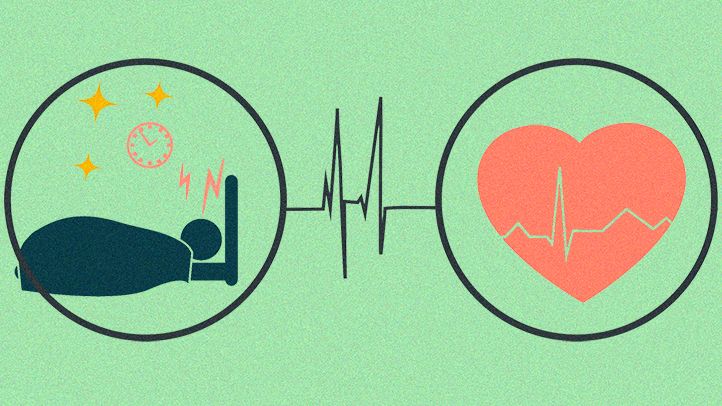#sleep #health #heart
“Sleep duration is now considered an essential component for ideal heart and brain health”— Paul Ebeling
The revised checklist is very important to Americans’ health as heart disease is still the number one cause of death in the US. and worldwide, and 80% of all heart-related events are preventable with healthy lifestyle choices.
The new AHA Life’s Essential 8 guidelines include:
Diet. The updated checklist includes a new guide to “assess diet quality for adults and children at the individual level” and population level. According to
Fatherly, for individuals, the Mediterranean Eating Plan for Americans or MEPA is used to measure and monitor cardiovascular health. This includes questions on how often patients eat olive oil, veggies, berries, meat, fish, and more. For population levels, the guide suggests the DASH diet (Dietary Approaches to Stop Hypertension), which includes a high intake of fruits, vegetables, nuts and legumes, whole grains, low-fat dairy and low intake of sodium, red and processed meats, and sweetened drinks.
Exercise. The AHA maintained its 2010 guidelines and recommends at least 150 minutes of moderate physical activity or 75 minutes of intense activity each week for adults.
Tobacco exposure. In the 2010 checklist, only traditional cigarettes were mentioned. The updated guidelines include vaping and secondhand smoke exposure as risk factors for kids and adults.
Sleep. For the first time, the AHA acknowledges in its guidelines that sleep duration is linked to cardiovascular disease. Adults should get 7 to 9 hours of sleep, 13- to 18-year-olds need 8 to 10 hours, kids ages 6 to 12 need 9 to 12 hours, and those 5 years and younger need 10 to 16 hours of sleep each night.
BMI. While the advisory group acknowledged that BMI, or body mass index, is an “imperfect metric,” it said it is a reasonable gauge to assess weight categories that may lead to health problems. A BMI of 18.5-24.9 is associated with the highest levels of cardiovascular health, says the AHA.
Blood lipids. The advisory group updated its recommendations for blood lipid levels in the new guidelines. The AHA now recommends using non-HDL cholesterol as the preferred metric to monitor rather than total cholesterol. HDL is the “good” cholesterol and other forms (non-HDL) are linked to cardiovascular disease when elevated. Non-HDL cholesterol can be measured without fasting beforehand making it more available to people at any time of day.
Blood glucose. This guideline was also updated to include the option of hemoglobin A1c readings, or blood glucose levels, for those with or without type 1 or type 2 diabetes or prediabetes. Hemoglobin A1c can better measure long-term glycemic control.
Blood pressure. The AHA recommendations did not change from the previous 2017 guidance that established levels less than 120/80 mm Hg as optimal, and hypertension defined as 130-139 mm Hg systolic pressure (the top number) or 90-89 mm Hg diastolic pressure (the bottom number) in a reading.
Life’s Essential 8 is a major step forward in our ability to identify when cardiovascular health can be preserved and when it is sub-optimal. It should energize efforts to improve cardiovascular health for all people and at every life stage.Have a happy holiday week, Keep the Faith!









